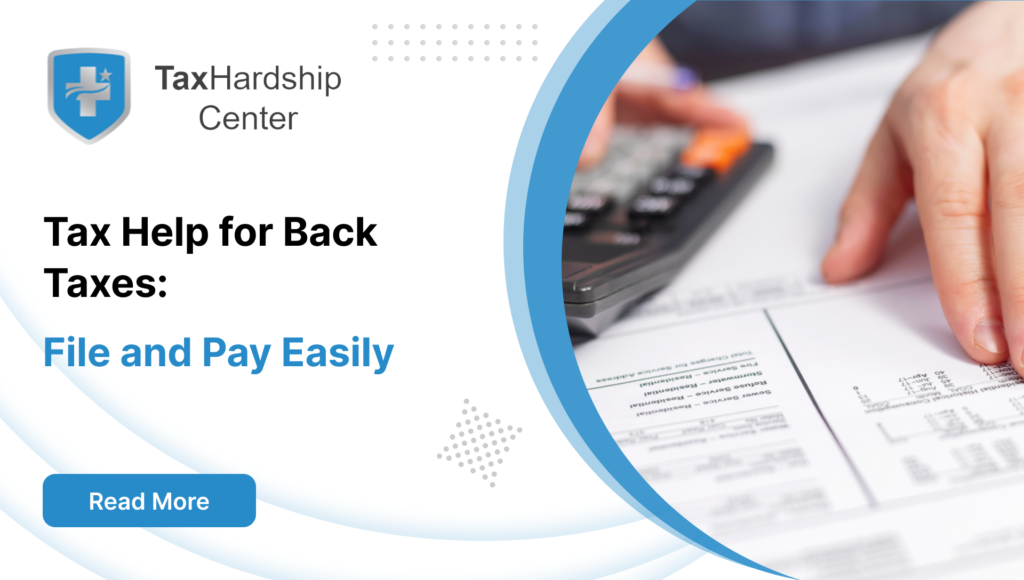Deadlines are looming; forms multiply—payroll reporting can feel overwhelming for business owners. One crucial form, the IRS Form W-3, summarizes employee wage information for the Social Security Administration (SSA). But fear not! Today, we simplify W-3 filing, highlighting its importance and offering easy solutions to navigate the process.
What Is IRS Form W-3?
IRS Form W-3 is a summary page accompanying the Form W-2, Wage, and Tax Statement to the Social Security Administration (SSA). This form consolidates information for all employees’ earnings, Social Security wages, Medicare wages, and tax withholdings for the year. Therefore, Form W-3 plays a central role in the annual ritual of tax form submissions by businesses of various sizes.
Purpose of Form W-3
The primary purpose of Form W-3 is to transmit an employer’s Form W-2 to the SSA. It is a cover sheet and provides a collective report of all employees’ earnings and withholdings. The information on Form W-3 should match the cumulative data on the accompanying W-2 forms. This alignment is critical, ensuring that the SSA and the IRS can correctly attribute Social Security and Medicare benefits to employees.
How Does Tax Hardship Center Ease Tax Concerns?
Filing Form W-3 might seem straightforward, but navigating the intricacies of payroll reporting and tax regulations can be overwhelming. At Tax Hardship Center, we understand the challenges businesses face, and we’re here to help ensure a smooth W-3 filing process.
Our experts can assist with:
- Choosing the Right Form: Standard W-3, W-3SS? We’ll guide you based on employee income types.
- Accurate Data Entry: Avoid delays and penalties with our data review and error mitigation.
- Electronic Filing Made Easy: We’ll help you navigate the SSA’s platform or ensure compatible e-files from your software.
- Deadline Compliance: Meet the January 31st deadline and avoid late filing penalties.
Focus on your business; we’ll handle the W-3! Schedule a free consultation with the Tax Hardship Center today.
Form W-3 Vs. Form W-2: How Do They Differ?
While Form W-3 and Form W-2 are closely related, they serve different functions. Form W-2 outlines an individual employee’s wages and taxes withheld during the year and is sent to both the employee and the SSA. Conversely, Form W-3 is a summary of all W-2 forms and is sent only to the SSA along with copies of W-2 forms. Essentially, if Form W-2 represents the individual trees, Form W-3 represents the overview of the forest.
Who Needs to File Form W-3?
The IRS requires employers to file Form W-3 if they are also required to file Form W-2 for their employees. This applies to a broad range of organizations:
- Businesses of all sizes: If you have employees, whether a large corporation or a small mom-and-pop shop, you might need to file Form W-3.
- Non-profits: Even non-profit organizations that pay employees for their services must comply with these tax reporting requirements.
- Any entity paying for services: If you pay someone for their work and issue them a Form W-2 to report those earnings to the IRS, you’ll likely need to file a Form W-3.
Form W-3 acts as a summary document. When you file Form W-2 for each employee, you report their wages and any taxes withheld. Form W-3 takes the combined totals from all those W-2 forms and submits them to the Social Security Administration along with a copy of each W-2. This ensures the government understands employee earnings and taxes withheld throughout the year.
How to File a Form W-3
Form W-3, used to transmit copies of employee W-2s to the Social Security Administration (SSA), requires accuracy and a touch of finesse. Here’s a detailed breakdown of the steps involved in filing Form W-3:
Step 1: Prepare Your W-2 Forms Before you can file Form W-3, you must complete a W-2 for each employee. This form details their earnings and tax withholdings for the year.
Step 2: Choose Your Filing Method. Decide whether you will file electronically or on paper. Electronic filing is recommended due to its speed and accuracy.
Electronic Filing:
- Register for Business Services Online (BSO): Use your email address to sign up for the SSA’s BSO platform1.
- Create or Upload W-2s: You can create W-2s directly in BSO or upload wage files from your payroll software1.
- Review and Submit: Ensure all information is correct before submitting electronically through BSO1.
Paper Filing:
- Obtain the Official Form W-3: Use the pre-printed IRS form for the corresponding tax year.
- Fill Out Form W-3: Summarize the information from all W-2 forms onto the W-3 form.
- Mail to SSA: Send the completed W-3 and Copy A of all W-2 forms to the SSA2.
Step 3: Adhere to Details
- Match the Form Version: The version of the paper W-3 must match the tax year of the W-2s2.
- Use Scannable Forms: The SSA requires scannable, pre-printed forms for efficient processing2.
Step 4: Verify and Double-Check
- Accuracy is Key: Double-check all entries for accuracy to avoid any potential issues with the SSA2.
- Timely Submission: Ensure you file the forms before the deadline to avoid penalties.
Step 5: Keep Records
- Confirmation: If filing electronically, save the confirmation receipt from BSO1.
- Copies: Keep copies of all forms submitted for your records.
Remember, while paper filing is still an option, it requires strict attention to detail and carries a higher risk of errors. Electronic filing through the BSO is preferred for its efficiency and reduced error rate. Timely and accurate filing of Form W-3 is essential for proper employee tax reporting.
Why Does the IRS Require Employers to File Form W-3?
- Reconciling the Numbers: Form W-3 is a master summary of all the W-2 forms issued to employees. It allows the IRS to compare the total wages and taxes withheld reported by the employer with the individual amounts reported by each employee. This helps identify any discrepancies and ensures everyone’s tax information is accurate.
- Securing Your Future Benefits: Social Security and Medicare are social insurance programs funded partly by payroll taxes. The information reported on Form W-3 contributes to your official earnings record, directly impacting your future retirement and healthcare benefits calculation. Accurate reporting ensures you receive the benefits you deserve.
- Verifying Employer Obligations: Employers are responsible for withholding and paying payroll taxes based on employee wages. Form W-3 helps the IRS verify that employers meet these obligations and contribute their fair share to Social Security and Medicare.
By requiring Form W-3, the IRS maintains a reliable system for tracking income, ensuring proper tax collection, and safeguarding the social safety net for future generations.
What Information Needs to Be Included in Form W-3?
Form W-3 requires an aggregation of data found on all Forms W-2. This includes:
- Employer identification number (EIN)
- Employer’s name, address, and ZIP code
- The total amount of wages, tips, and other compensation
- Total federal income tax withheld
- Social Security wages, Social Security tax withheld
- Medicare wages and tips, Medicare tax withheld
- Total number of W-2 forms being submitted
- Contact person, phone number, email address, and fax number
When Do Employers Submit Form W-3?
Employers who issue Form W-2s to their employees must be familiar with Form W-3. This form is a summary sheet transmitting all the W-2 information to the Social Security Administration (SSA). But timing is crucial! Here’s what you need to know about the W-3 filing deadline:
- The Key Date: The deadline to submit Form W-3 and Copy A of each employee’s W-2 is January 31st, following the reported tax year. If your employees earned wages in 2023, the W-3 and corresponding W-2s must be submitted by January 31st, 2024.
- Why It Matters: Meeting this deadline is critical. Missing it can result in penalties from the SSA, which can add up quickly, especially for businesses with many employees.
- Planning Makes Perfect: Don’t wait until the last minute! It’s a good practice to start gathering W-2 information and preparing your W-3 before the deadline. This will help ensure a smooth filing process and avoid any potential penalties.
IRS Form W-3 Versions
Different versions of Form W-3 are tailored to a specific type of income reporting. Here’s a breakdown to help you choose the right one for your employees:
- Standard Form W-3: This is the most common version for U.S. employees. It helps employers withhold federal income tax based on employees’ allowances claimed.
- Form W-3SS: This specialized form is used for employees working in U.S. territories or those who receive income reported on Forms W-2AS, W-2CM, W-2GU, or W-2VI. These forms typically involve income from American Samoa, Guam, Puerto Rico, the Virgin Islands, or foreign countries. Form W-3SS helps track these employees’ Social Security, Medicare, and withheld income.
Benefits of Form W-3
Filing Form W-3 is another tax formality significantly benefiting businesses and the tax system. Here’s why:
- Streamlined Payroll Reporting: Form W-3 summarizes all the individual W-2 forms issued to employees. This eliminates the need to submit each W-2 separately to the Social Security Administration (SSA), saving businesses time and effort.
- Accurate Employee Wage Records: By providing a central record of employee wages and taxes withheld, Form W-3 helps ensure the accuracy of employee earnings data. This is crucial for payroll and employees when applying for loans or other benefits.
- Efficient Tax System: Form W-3 plays a vital role in the smooth operation of the tax system. It allows the IRS and SSA to efficiently cross-check the total wages reported by employers with the amounts reported by employees on their tax returns. This helps identify discrepancies and ensures that Social Security and Medicare funds are allocated correctly.
- Reduced Errors and Penalties: Accurate and timely filing of Form W-3 minimizes the risk of errors in payroll reporting. This translates to fewer headaches for businesses, as they avoid potential penalties and fines from the IRS or SSA for inaccurate reporting.
Common Mistakes To Avoid While Filing Form W-3
- Incorrect Employer Identification Numbers (EINs): To avoid mismatches, ensure the EIN on Form W-3 matches the EIN on record with the IRS.
- Mismatched Totals: Verify that the total amounts on Form W-3 align with the totals from all the W-2 forms submitted. Discrepancies can lead to processing delays.
- Use of Photocopies: Always use the IRS-provided scannable Form W-3 instead of photocopies, which may not be processed correctly.
- Inaccurate Employee Information: Double-check all employee details, including names, Social Security numbers, and reported wages, for accuracy.
- Failing to Report All Wages and Taxes: Report all earnings, Social Security wages, Medicare wages, and employee withholdings as required.
- Not Filing Electronically When Required: The IRS encourages electronic filing for faster processing and fewer errors. If mandated, avoid paper filing.
- Omitting Decimal Points and Comma Separators: Be precise with figures. Omitting decimal points or commas can lead to significant reporting errors.
- Submitting After the Deadline: File Form W-3 by the required deadline to avoid penalties. For tax year 2024, the deadline is January 31, 2025.
- Neglecting to Sign the Form: An unsigned Form W-3 is not valid. Ensure it is signed before submission.
- Overlooking the Need for a W-3c: If corrections are needed after initial filing, use Form W-3c to transmit corrected W-2 forms.
Conclusion
W-3 filing ensures accurate tax reporting and efficient social security administration. By providing timely and accurate submissions, businesses contribute to a smooth-running tax system and safeguard the social safety net for future generations. However, navigating the intricacies of payroll reporting can be time-consuming and stressful. Tax Hardship Center can help! We offer expert guidance, ensuring accurate data entry, hassle-free electronic filing, and timely submissions. Let us handle the complexities of W-3 filing while you focus on running your business and achieving your entrepreneurial goals. Schedule a free consultation with the Tax Hardship Center today!
Why Tax Hardship Center?
1. Hassle-Free Assistance:
Say goodbye to sleepless nights and endless tax-related stress. At the Tax Hardship Center, we believe in simplifying the complex. Our team of experts is dedicated to guiding you through every step of the process, ensuring that your tax concerns are met with precision and care.
2. 14-Day Money Back Guarantee:
We’re so confident in our ability to ease your tax worries that we offer a 14-day money-back guarantee. If, for any reason, you’re not satisfied with our service, we’ll gladly refund your investment. Your peace of mind is our top priority!
3. Free Consultation:
Are you curious about how we can transform your tax experience? Book a free consultation now! Our team will assess your situation, answer your questions, and provide free insights tailored to your needs.
4. Nationwide Coverage:
No matter which corner of the United States you call home, the Tax Hardship Center covers you. We proudly serve all 50 states, bringing our expertise to your doorstep. Wherever you are, our commitment to excellence follows.
FAQs:
1. What is the difference between Form W-2 and W-3?
Form W-2 is an employee’s wage and tax statement, while Form W-3 is a summary of all W-2s submitted to the SSA by an employer.
2. Do I need to file Form W-3?
Yes, if you issue Form W-2s to employees, you must file Form W-3 with the SSA by January 31st of the following year.
3. What are the benefits of electronic filing for Form W-3?
Electronic filing through the SSA’s Business Services Online platform is faster and more accurate, eliminating the risk of errors associated with paper submissions.
4. Can the Tax Hardship Center help me choose the right version of Form W-3?
Absolutely! We’ll help you select the appropriate form (standard W-3 or W-3SS) based on your employees’ specific income types.
5. What happens if I miss the W-3 filing deadline?
Missing the deadline can result in penalties from the SSA. We recommend planning and preparing your W-3 well in advance to ensure timely submission.








